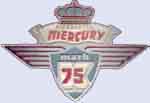Quote from above: Now I'm wondering. Were the OMC rotary's aluminum housing's sandwiched between cast iron as well? And were there any problems due to the temperature differential between the intake and exhaust ports while the motor was warming up?
My "GUESS" that OMC were in a new field & that they were trying so many different things. Combining aluminium & steel seems a bit of a nonsense but perhaps it was just a quick fix to see what would happen. All these engines were prototypes. No individual engine was the same, every single engine was unique. John has been sending me updates as things pop into his head. After all this was 35 odd years ago. I will be posting them all. These engines were way ahead of their time & probably still are. Moeller has them now & I believe they are now direct Injected. Wouldn't it be awesome if they could adapt one to an E-Tec gearcase & run it.
I just want to see & explore one of the four that John boxed up back in 1976. These were the new era powerheads without the notorious bolt. Another thought I had was regarding the EPA. If Charlie had notified them of their (OMC) success with the emissions & fuel consumption figures would they (EPA) have banned 2 stroke outboards (as they did with the 2 stroke bikes) & effectively killed Mercury & all other 2 stroke outboard manufacturers. The EPA were certainly a law unto themselves with no thought for common sense. or so it seems.
Things could have been very different today.
Ken


 Thanks:
Thanks:  Likes:
Likes: 



 Reply With Quote
Reply With Quote


















Bookmarks